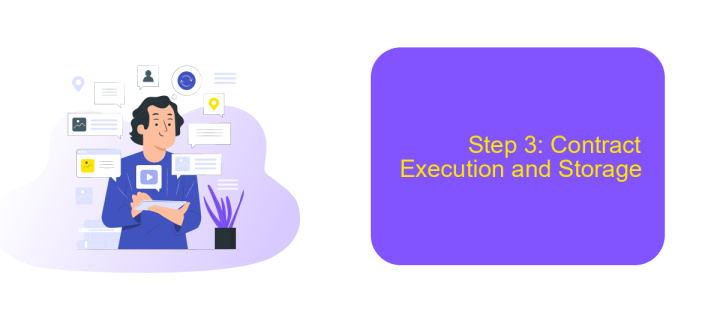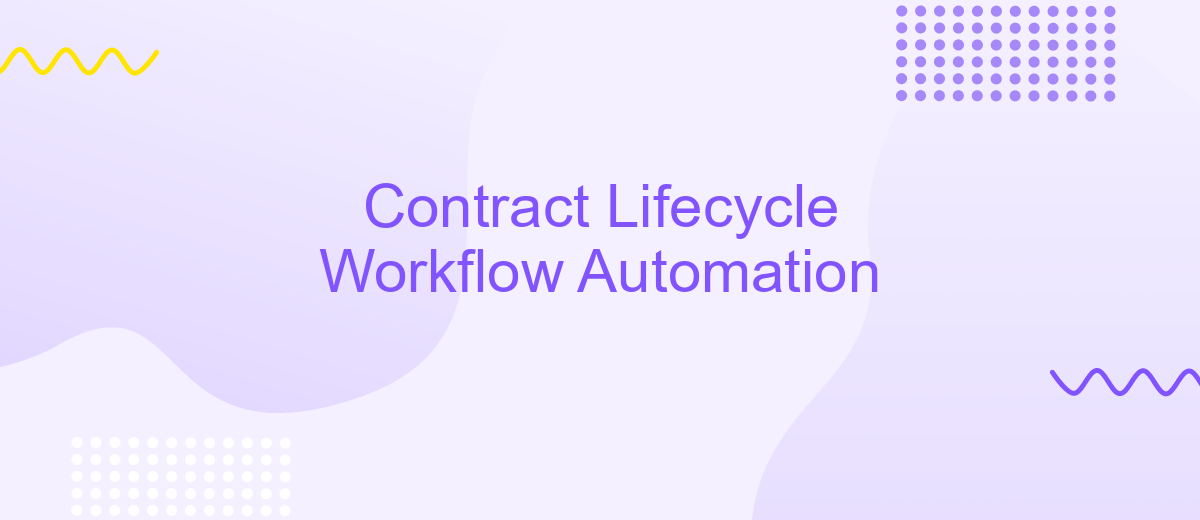Contract Lifecycle Workflow Automation
In today's fast-paced business environment, managing contracts efficiently is crucial for maintaining compliance and optimizing operations. Contract lifecycle workflow automation streamlines the entire process, from creation to execution and renewal, reducing manual errors and saving valuable time. This article explores the benefits, key features, and implementation strategies for automating your contract management, enabling your organization to stay competitive and agile.
Introduction: Automating the Contract Lifecycle for Efficiency
In today's fast-paced business environment, the efficiency of contract management can significantly impact an organization's success. Automating the contract lifecycle is a strategic approach to streamline processes, reduce manual errors, and ensure compliance. This not only saves time but also enhances the overall productivity of legal and procurement teams.
- Reduces manual data entry and associated errors
- Ensures compliance with legal and regulatory requirements
- Facilitates faster contract approvals and renewals
- Improves visibility and tracking of contract milestones
Implementing automation tools like ApiX-Drive can further enhance the contract lifecycle by seamlessly integrating various systems and applications. This allows for real-time data synchronization and better communication between departments. As a result, organizations can achieve greater efficiency, minimize risks, and focus on strategic initiatives rather than administrative tasks.
Step 1: Contract Request and Creation

The initial step in the contract lifecycle workflow is the contract request and creation phase. This stage begins when a party identifies the need for a new contract and submits a formal request. This request typically includes essential details such as the type of contract, involved parties, key terms, and any specific requirements. Utilizing a centralized platform for contract requests ensures that all necessary information is captured accurately and efficiently, reducing the possibility of errors and omissions.
Once the request is submitted, the contract creation process commences. This involves drafting the contract based on the provided details and predefined templates. Automation tools play a crucial role in this phase by streamlining the drafting process and ensuring compliance with organizational standards and legal regulations. For instance, integrating with services like ApiX-Drive can facilitate seamless data transfer between different systems, thereby enhancing accuracy and efficiency. By automating these initial steps, organizations can significantly reduce the time and effort required to create contracts, allowing them to focus on more strategic tasks.
Step 2: Contract Negotiation and Review

During the contract negotiation and review phase, it is crucial to ensure all parties agree to the terms and conditions outlined in the document. This step involves multiple stakeholders, including legal teams, finance departments, and external partners. Effective communication and collaboration are key to a successful negotiation process.
- Draft initial contract terms and share with all relevant parties.
- Collect feedback and proposed changes from stakeholders.
- Revise the contract based on received feedback.
- Utilize contract management tools to track changes and maintain version control.
- Ensure all legal and compliance checks are completed.
Leveraging automation tools like ApiX-Drive can streamline this process by integrating various platforms and ensuring seamless communication between different teams. ApiX-Drive allows you to automate data transfer and notifications, reducing the manual effort involved in tracking changes and updates. This not only saves time but also minimizes the risk of errors, ensuring a more efficient and accurate contract negotiation and review process.
Step 3: Contract Execution and Storage

Once the contract has been reviewed and approved, the next step is contract execution. This involves obtaining the necessary signatures from all parties involved. Utilizing electronic signature platforms can streamline this process, making it faster and more secure. Platforms like DocuSign or Adobe Sign are commonly used for their reliability and ease of use.
After the contract is executed, it must be securely stored for future reference and compliance purposes. Digital storage solutions ensure that contracts are easily accessible and protected from unauthorized access. Cloud storage services such as Google Drive, Dropbox, or specialized contract management systems offer robust security features and easy retrieval options.
- Use electronic signature platforms for efficient contract execution.
- Store executed contracts in secure digital storage solutions.
- Ensure easy retrieval and compliance with storage regulations.
For seamless integration of these tools into your existing workflow, consider using ApiX-Drive. This service allows you to automate data transfer between various platforms, ensuring that your contract management process is both efficient and cohesive. By automating these tasks, you can focus on more strategic activities, knowing that your contracts are handled with precision and security.
- Automate the work of an online store or landing
- Empower through integration
- Don't spend money on programmers and integrators
- Save time by automating routine tasks
Step 4: Contract Performance and Compliance
Once a contract is executed, the focus shifts to performance and compliance. This phase involves monitoring the contract to ensure all parties meet their obligations and adhere to agreed terms. Leveraging automated tools can significantly enhance this process. For instance, setting up automated reminders for key milestones and deadlines ensures that no critical dates are missed. Regular audits and performance reviews can be scheduled to assess compliance and address any deviations promptly.
Integrating tools like ApiX-Drive can streamline these tasks by automating data flow between various systems, ensuring that all relevant information is up-to-date and accessible. ApiX-Drive enables seamless integration with multiple platforms, reducing manual data entry and minimizing errors. This not only enhances efficiency but also provides a comprehensive view of contract performance, helping organizations maintain compliance and make informed decisions based on real-time data.
FAQ
What is Contract Lifecycle Workflow Automation?
How can Contract Lifecycle Workflow Automation benefit my organization?
What features should I look for in a Contract Lifecycle Workflow Automation tool?
How do I integrate Contract Lifecycle Workflow Automation with my existing systems?
What are the potential challenges of implementing Contract Lifecycle Workflow Automation?
Apix-Drive will help optimize business processes, save you from a lot of routine tasks and unnecessary costs for automation, attracting additional specialists. Try setting up a free test connection with ApiX-Drive and see for yourself. Now you have to think about where to invest the freed time and money!


